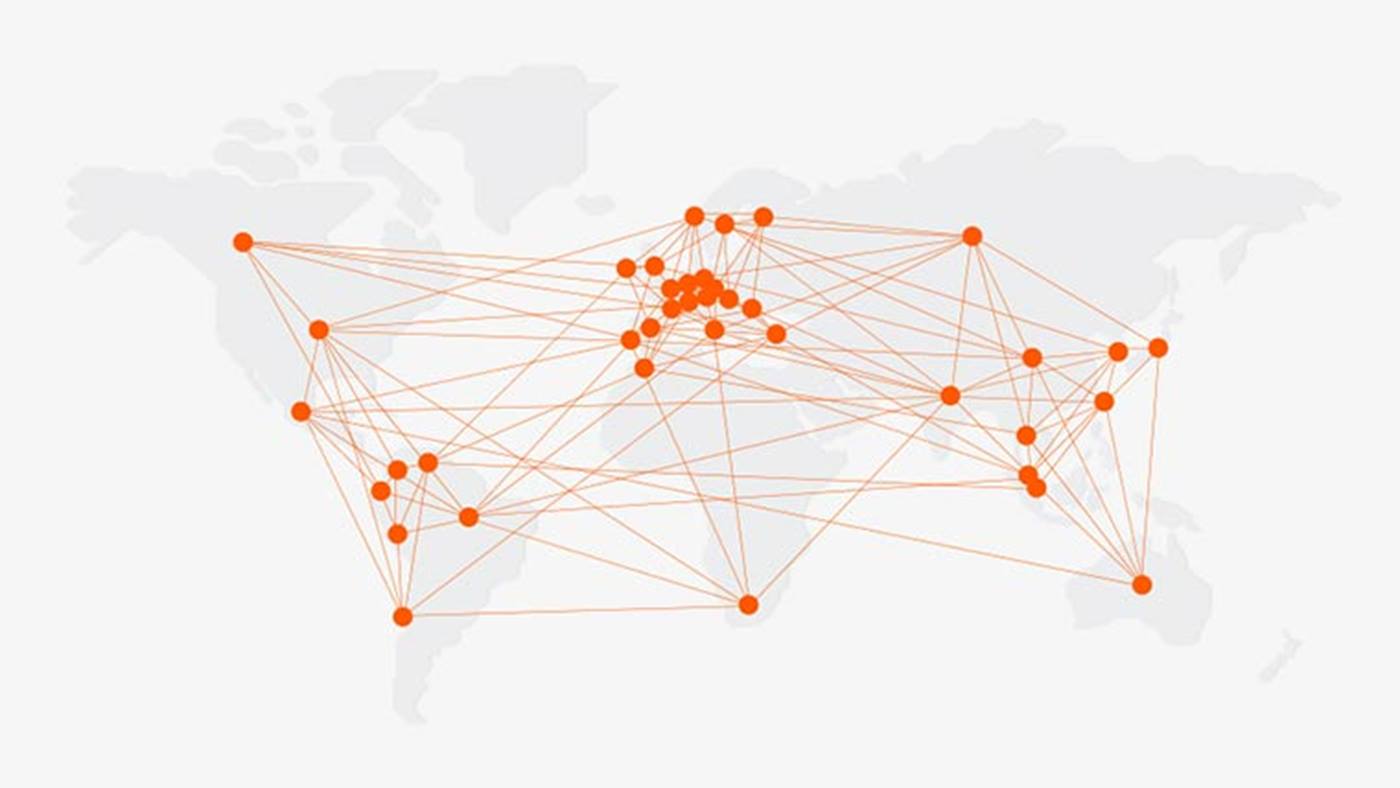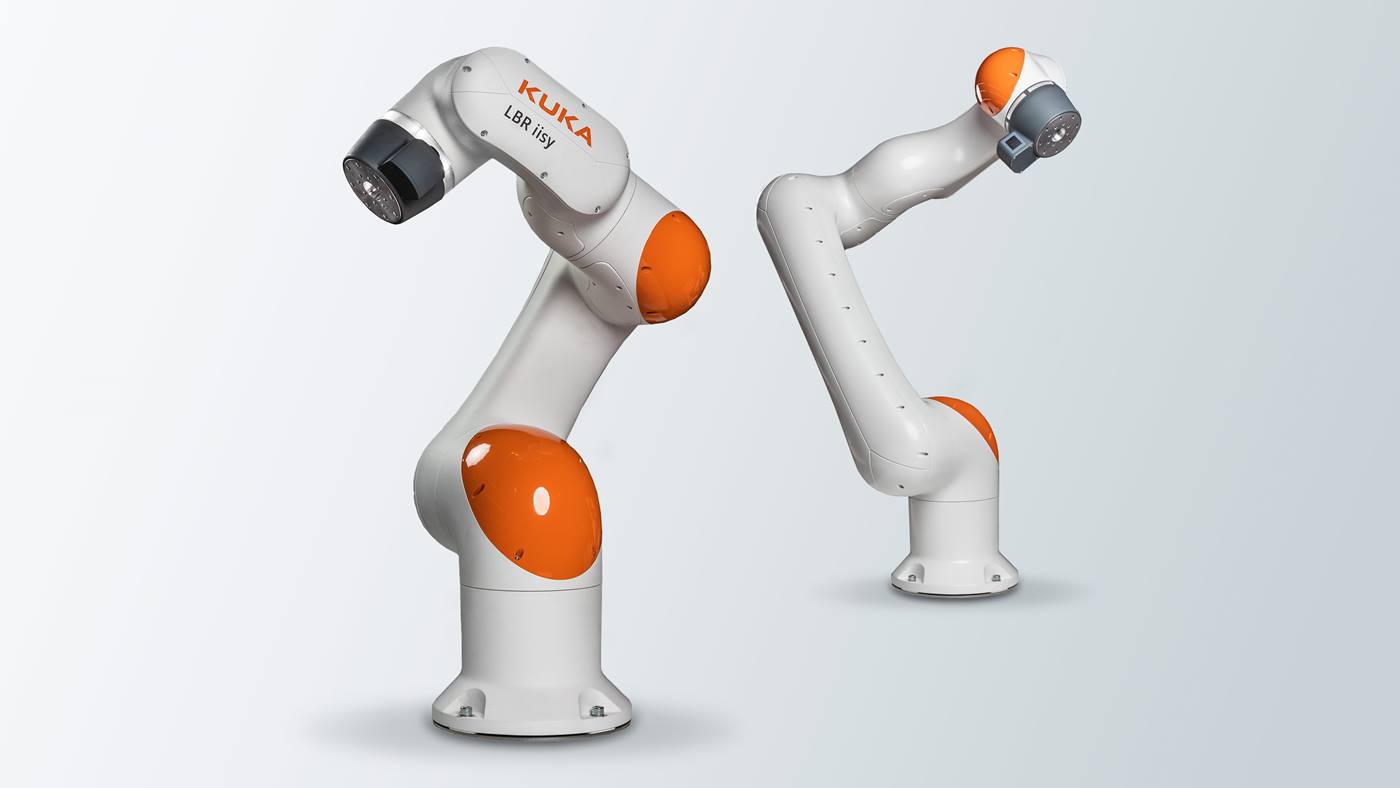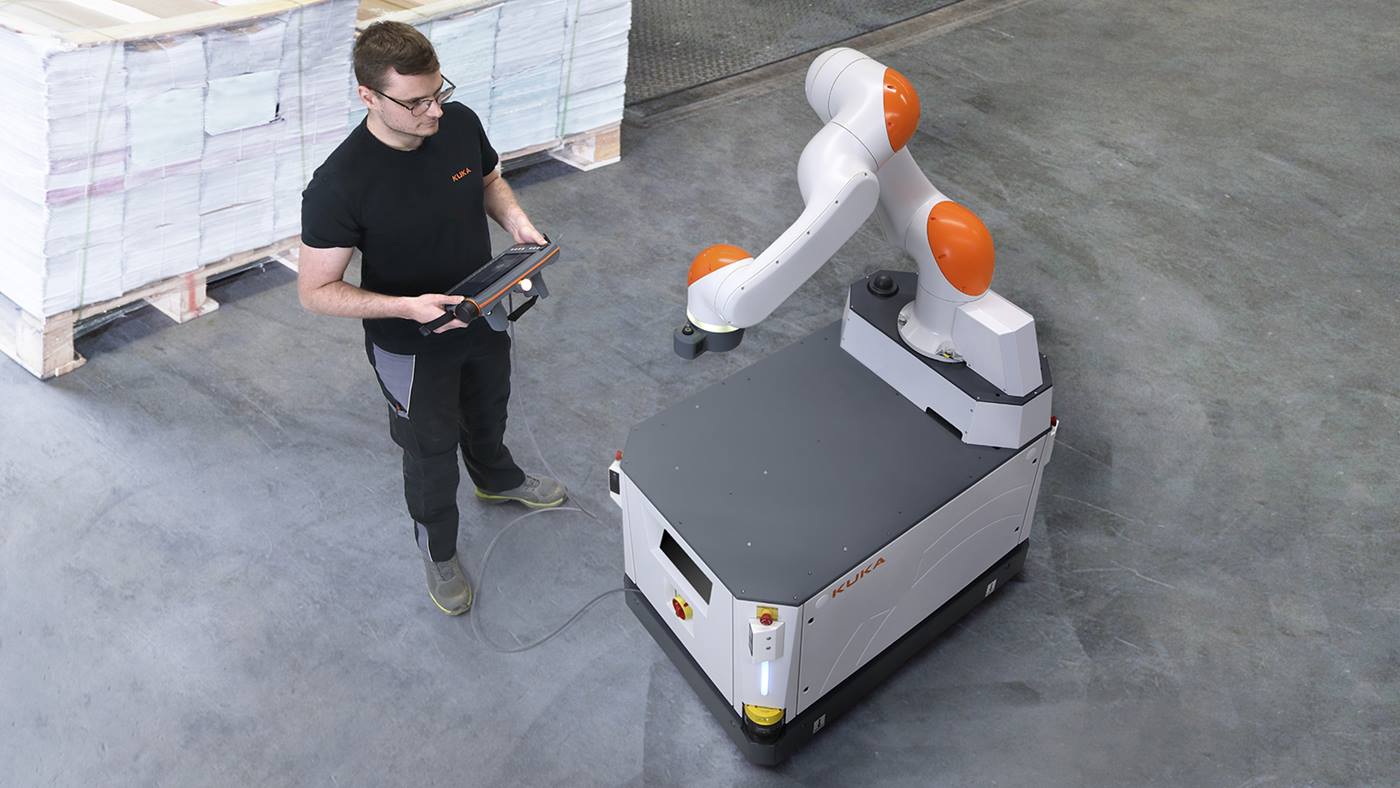Since July 2016, a KUKA LBR iiwa is now providing the human workers with support at the Munich plant. Why was the decision made for an HRC solution? Because subsequent integration was easier than for a design without HRC. It saves roughly 25% more space. A special HRC-capable gripper with integrated vacuum channels was designed for the LBR iiwa. Perfect collaboration with the human operator is thus possible. The human operator and robot now share the work for assembling side members at the BMW plant in Munich. The work sequence is designed as follows:
1. The BMW employee places the side member into the fixture and ensures there are sufficient reinforcement plates.
2. The robot colleague handles the correct positioning of the plates on the side member, and then returns to a rest position.
3. The KUKA industrial robot KR 240 welds both workpieces. Here, a roll door is lowered for operator safety.
4. On completion of the welding process, the roll door opens again and the operator can load a new side member.
5. The lightweight robot leaves the rest position and automatically starts the process again from the beginning.







